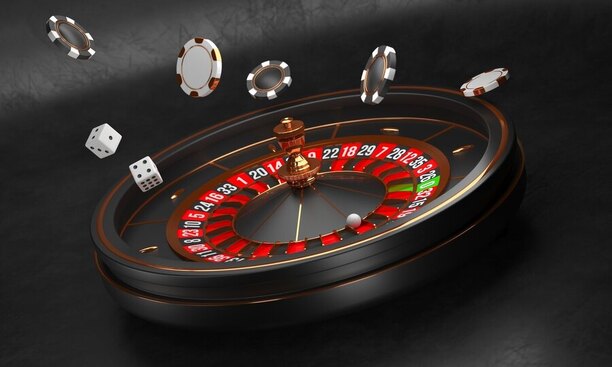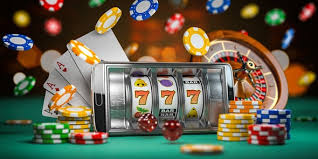Explore the psychological strategies behind bluffing in poker. Learn how deception, timing, and reading opponents make bluffing a powerful tool in online games.
Introduction
Bluffing has always been a cornerstone of poker strategy, often romanticized in pop culture as the ultimate mind game. Whether you’re watching high-stakes tournaments or participating in online games at home, the art of bluffing is both thrilling and essential. But beyond the chips and cards lies a deep psychological foundation that determines whether a bluff will succeed or fail.
This aw8 pro article explores the psychology behind bluffing in poker, how players manipulate perception, and how you can develop your own skills to outsmart opponents. Whether you’re new to online games or an experienced player, understanding bluffing is key to elevating your poker strategy.
What Is Bluffing in Poker?
Bluffing is the act of betting or raising with a weak hand in order to convince opponents that you hold a stronger one. It’s a tactic used to force folds from players with potentially better cards. While it may seem simple, successful bluffing is a complex psychological exercise involving timing, observation, and emotional control.
Bluffing isn’t about luck—it’s about making your opponent believe a false narrative.
The Psychological Elements of Bluffing
1. Deception and Misdirection
Bluffing thrives on deception. In poker, you’re not just playing your hand; you’re playing your opponent’s perception of your hand. Skilled players create stories through their actions—betting patterns, timing, and expressions (in live games). In online games, where facial cues are absent, players rely heavily on betting behavior and game rhythm to convey false strength.
2. Confidence and Body Language
Even in digital formats, confidence shines through. Quick, deliberate actions signal strength. Hesitation or inconsistent play may raise suspicion. Players who bluff effectively often adopt consistent behavior to avoid giving away tells.
3. Reading the Opponent
Effective bluffing requires knowing your audience. Are they tight (playing only strong hands) or loose (willing to gamble)? Are they aggressive or passive? By analyzing past behavior, you can tailor your bluff accordingly.
In online games, observing betting patterns, fold tendencies, and reaction times is crucial for building a psychological profile of your opponent.
4. Emotional Control
Bluffing is a double-edged sword. When it works, it feels empowering. When it fails, it can lead to tilt—a state of emotional frustration that clouds judgment. Master bluffers maintain emotional neutrality, treating poker as a game of probabilities rather than ego.
5. Risk Assessment and Pot Odds
Not every situation is ideal for bluffing. The psychology of risk assessment is key—players must evaluate pot odds, stack sizes, and table position. Bluffing against multiple opponents or into large pots without sufficient information is usually ill-advised.
Types of Bluffs in Poker
1. Pure Bluff
Used when a player has no chance of winning unless all opponents fold. This requires precise timing and a deep understanding of table dynamics.
2. Semi-Bluff
A player bets or raises with a drawing hand that isn’t currently strong but could improve (e.g., a flush draw). This tactic blends bluffing with actual potential and often leads to greater success.
3. Continuation Bet (C-Bet) Bluff
After raising pre-flop, a player continues to bet on the flop, regardless of whether it helped their hand. This exploits the perception of strength from the initial raise.
How Online Games Influence Bluffing Strategy
In the transition from live poker to online games, bluffing tactics have evolved. Without the benefit of physical reads, online players must sharpen their observational skills and rely on behavioral patterns.
Key strategies in online games include:
- Using timing tells: Quick bets often signal confidence, while delayed bets can indicate indecision or deception.
- Multi-tabling awareness: Players in multiple games may act inconsistently, so look for patterns across hands.
- Stat tracking: Advanced players use data to detect opponent tendencies over large sample sizes.
Signs Your Bluff Might Be Failing
- Your opponent is calling too quickly – They may not be convinced by your story.
- You’re overusing the bluff – Repetition makes your strategy transparent.
- Inconsistent betting sizes – Irregularity can create suspicion.
- You’re ignoring the board texture – Bluffing into a highly connected or suited board can be dangerous.
Tips to Improve Your Bluffing Game
- Practice restraint: Bluffing should be used sparingly. Overuse makes it predictable.
- Keep your story consistent: Every action should reinforce your narrative.
- Choose your spots wisely: Bluff in heads-up pots more often than multi-way pots.
- Mix up your game: A mix of bluffs and value bets keeps opponents guessing.
- Study your hands post-game: Analyze replays to understand why a bluff worked or failed.
When Not to Bluff
Bluffing is powerful, but not always appropriate. Avoid bluffing:
- Against beginners who call too often.
- In low-stakes games where players don’t fold easily.
- When you lack information about your opponent.
- In multi-way pots with too many variables.
Successful players know when to fold and wait for a better opportunity rather than force a bluff.
The Bluffing Mindset
More than technique, bluffing is a mindset. It involves embracing uncertainty and walking the line between boldness and recklessness. Great bluffers understand probability, emotion, and timing. They play the player, not just the cards.
As you grow more experienced in online games, you’ll learn that bluffing is less about trickery and more about controlled storytelling through strategic actions.
Conclusion
Bluffing is one of poker’s most captivating elements, blending psychology, strategy, and risk into a single move. Whether you’re playing at a live table or engaging in fast-paced online games, mastering the art of bluffing can turn the tide of your gameplay.
By understanding your opponents, managing your emotions, and choosing your spots, you can use bluffing as a weapon to gain a competitive edge. The next time you’re considering a bluff, remember—it’s not about the hand you hold, but the story you tell.
Ready to take your bluffing skills to the next level? Join the league of players mastering the art of online games—support the league today and elevate your strategy to new heights.


